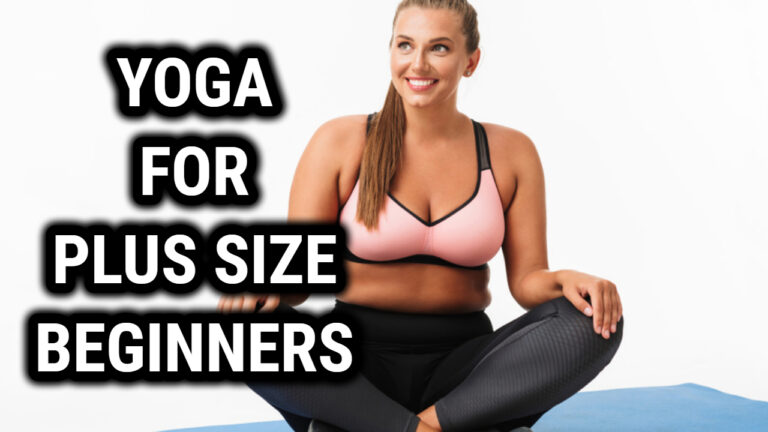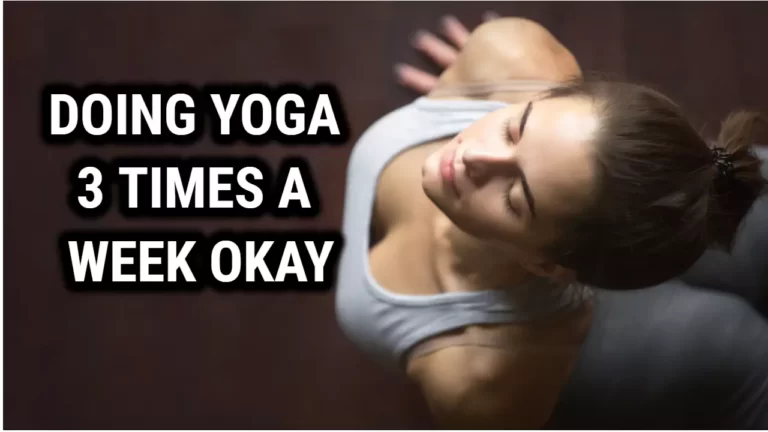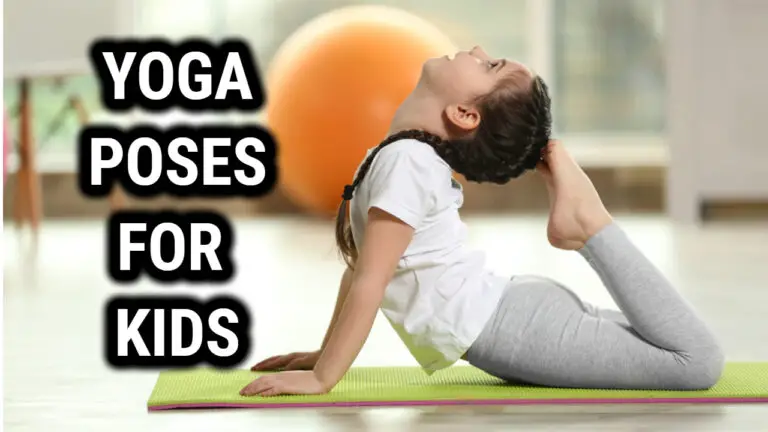Side Bend Yoga Poses: Improve Flexibility and Strengthen Your Core

Side bend yoga poses are a great way to stretch and strengthen the muscles on your sides while also improving your flexibility and balance. These poses involve bending the body to one side, which opens up the ribcage and expands the chest. They also help prepare the body for pranayama and deep breathing exercises by widening the diaphragm and allowing the collarbones and sternums to lift and spread.
Side bending poses can be done in a variety of ways, from seated and standing poses to more advanced poses that require greater flexibility and strength. Some common side bending poses include Triangle Pose, Extended Side Angle Pose, and Gate Pose. These poses are often incorporated into yoga sequences to help create a well-rounded practice that targets multiple areas of the body.
Whether you are new to yoga or have been practicing for years, side bend poses can be a great addition to your practice. They offer a range of benefits, from improving your posture and breathing to reducing tension in the body and promoting relaxation. So next time you hit the mat, consider incorporating some side bend poses into your practice for a deeper stretch and a more balanced practice.
Benefits of Side Bend Yoga Poses
Side bend yoga poses offer numerous benefits to the body and mind. Here are some of the most notable benefits:
- Improves flexibility: Side bends help to increase flexibility in the spine, hips, and thigh muscles, which can help to reduce stiffness and improve range of motion.
- Strengthens core muscles: Side bends engage the core muscles, including the obliques and transverse abdominis, which can help to improve posture and stability.
- Enhances balance: Standing side bend poses, such as triangle pose, can help to improve balance and coordination by engaging the muscles in the legs and feet.
- Stimulates liver function: Certain side bend poses, such as gate pose, can help to stimulate the liver and improve its function, which can help to detoxify the body.
- Improves breathing: Side bends help to open up the chest and lungs, which can improve breathing and respiratory function.
- Reduces stress: Side bends can help to release tension in the neck, shoulders, and upper back, which can help to reduce stress and promote relaxation.
Overall, incorporating side bend yoga poses into your regular practice can help to improve your overall physical and mental well-being. Whether you’re looking to increase flexibility, build strength, or reduce stress, side bends offer a range of benefits that can help you achieve your goals.
Common Side Bend Yoga Poses
Side bending poses are a great way to stretch the muscles on your sides and work out any tension you may be holding in those areas. Here are some common side bending yoga poses:
| Poses | Description |
|---|---|
| Extended Triangle Pose (Utthita Trikonasana) | This pose stretches the torso, hips, groins, and hamstrings. It also tones the legs, opens the chest and shoulders, and helps to relieve lower back pain, stress, and sluggish digestion. |
| Half Moon Pose (Ardha Chandrasana) | This pose strengthens the legs, improves balance, and stretches the hamstrings, groins, and spine. It also helps to relieve stress and anxiety. |
| Gate Pose (Parighasana) | This pose stretches the sides of the body, opens the hips, and strengthens the legs. It also helps to improve digestion and relieve lower back pain. |
| Revolved Triangle Pose (Parivrtta Trikonasana) | This pose strengthens the legs, stretches the hamstrings, hips, and spine, and improves digestion. It also helps to relieve stress and anxiety. |
Other common side bending poses include:
- Side Angle Pose (Utthita Parsvakonasana)
- Revolved Side Angle Pose (Parivrtta Parsvakonasana)
- Side Plank Pose (Vasisthasana)
- Side-Reclining Leg Lift (Anantasana)
It’s important to remember to breathe deeply and evenly throughout each pose, and to listen to your body. If you feel any pain or discomfort, ease out of the pose and rest. Always consult with a doctor before starting any new exercise routine, especially if you have any injuries or medical conditions.
Tips for Practicing Side Bend Yoga Poses
Side bend yoga poses are a great way to stretch and strengthen the muscles of the torso, hips, and legs. Here are some tips to help you get the most out of your side bend yoga practice:
- Engage your legs: To get the most out of your side bend yoga practice, it’s important to engage your legs and keep them firmly grounded into your yoga mat. This will help you maintain balance and stability throughout the pose.
- Relax your shoulders: As you move into a side bend, it’s easy to tense up your shoulders and bring them up towards your ears. Instead, focus on keeping your shoulders relaxed and down, away from your ears. This will help you maintain proper alignment and avoid strain in your neck and shoulders.
- Breathe deeply: Deep breathing is an important part of any yoga practice, and side bend yoga poses are no exception. As you move into a side bend, focus on breathing deeply into your belly and into the sides of your ribcage. This will help you relax and deepen the stretch.
Here are a few more tips to help you practice side bend yoga poses safely and effectively:
- Start slowly: If you’re new to side bend yoga poses, it’s important to start slowly and work your way up to more advanced poses. Begin with simple poses like Gate Pose or Seated Side Bend, and gradually work your way up to more challenging poses like Revolved Bound Gate Pose.
- Listen to your body: As you practice side bend yoga poses, it’s important to listen to your body and avoid pushing yourself too hard. If you feel pain or discomfort, back off the pose and try a more gentle variation.
- Use props: Yoga props like blocks, straps, and blankets can be helpful in supporting your body and helping you maintain proper alignment in side bend yoga poses. Don’t be afraid to use props to help you get the most out of your practice.
Also Read: Prenatal Yoga Poses: Simple and Safe Ways to Support Your Pregnancy
Modifications And Variations
Side bend yoga poses can be modified to accommodate different experience levels and fitness levels. Variations of the pose can help to stretch, strengthen, and improve mobility in the side body. Here are some modifications and variations of side bends:
- Modified Side Bend This modification involves keeping the feet hip-distance apart and bending from the waist to one side, allowing for a deeper lateral flexion without putting too much strain on the lower back. This is an ideal option for beginners or those with limited mobility in the limbs and spine.
- Side Stretches These involve taking a wider stance than normal and bending down sideways towards one leg with both arms extended overhead. From this position, you can twist your torso gently to each side for a deeper side stretch.
- Bent-Knee Twist This variation is an asymmetrical pose that involves standing up straight with one foot slightly wider than hip-distance apart and bending down towards the outer foot while keeping both knees bent. The arms can be extended out to either side or held together in front of your chest as you twist your torso gently towards each side.
These variations offer options for everyone – regardless of experience level – to modify their practice as needed while still getting all the benefits of a full side bend practice. With these modifications and variations, practitioners can explore new ways to move their bodies while deepening their practice at their own pace and comfort level.
Precautions and Contraindications
As with any physical activity, it is important to take precautions when practicing side bend yoga poses. Here are some things to keep in mind:
- If you have a back injury, be careful when practicing side bends. If you feel any pain in the low back, honor your body and come out of the pose.
- If you have a shoulder injury, it is best to avoid practicing side bends altogether. Practice mountain pose instead.
- People with knee and ankle injuries should avoid kneeling side bends as it puts pressure on these joints.
- People who have undergone spinal surgery should also avoid kneeling side bends as the spine gets a lot of pressure during the pose.
It is always important to listen to your body and not push yourself beyond your limits. If you feel any pain or discomfort, come out of the pose and rest.
If you are pregnant or have any medical conditions, it is important to consult with your doctor before practicing side bend yoga poses.
Related Read: Supine Yoga Poses: Relax Your Body and Mind with These Simple Exercises
Conclusion
Side bending yoga poses offer a range of benefits, including increased mobility, flexibility, and strength. They also improve concentration, memory, and energy levels while strengthening the core muscles and improving posture.
Whether you are a beginner or an experienced yogi, there are many side bending poses to choose from. Some of the most popular poses include Revolved Bound Gate Pose, Seated Side Bend Pose, and Gate Pose. It’s important to listen to your body and practice at your own pace, gradually increasing the intensity of your poses as you become more comfortable.
Remember to always consult with a healthcare professional before starting any new exercise routine, especially if you have any pre-existing medical conditions or injuries. With consistent practice and proper guidance, side bending yoga poses can be an excellent addition to your overall fitness routine and help you achieve greater balance, strength, and flexibility.





